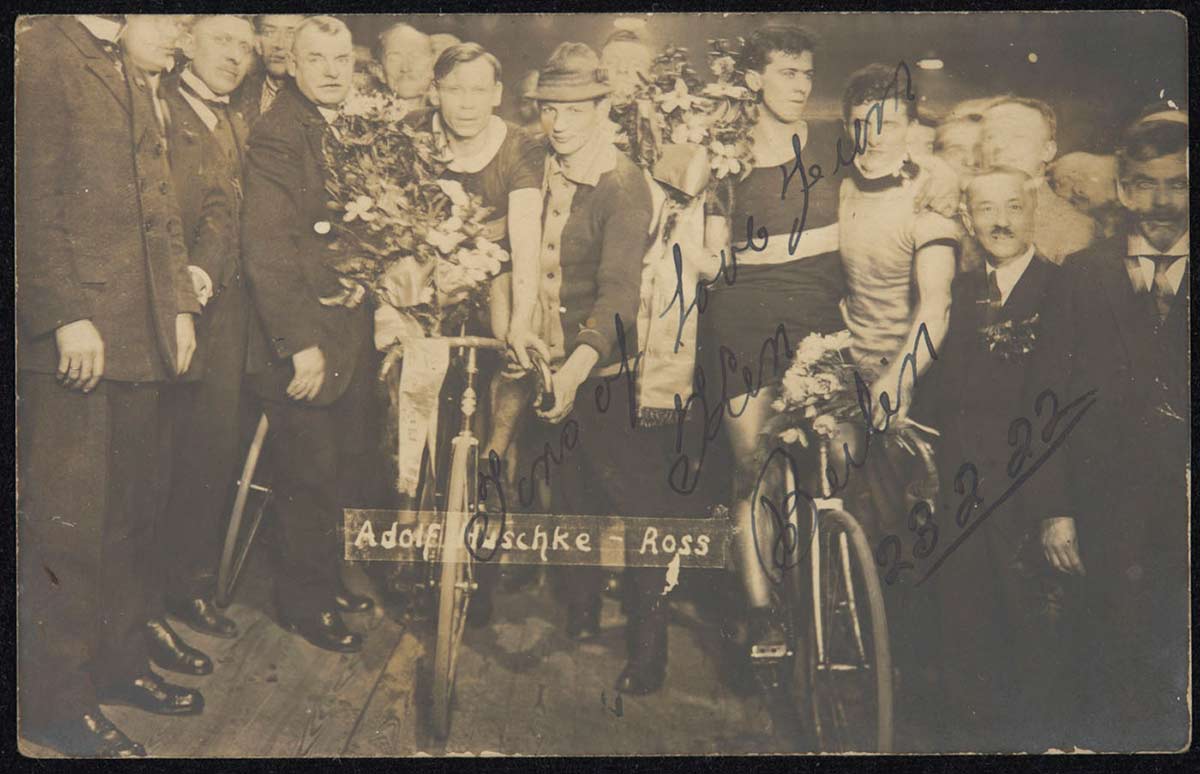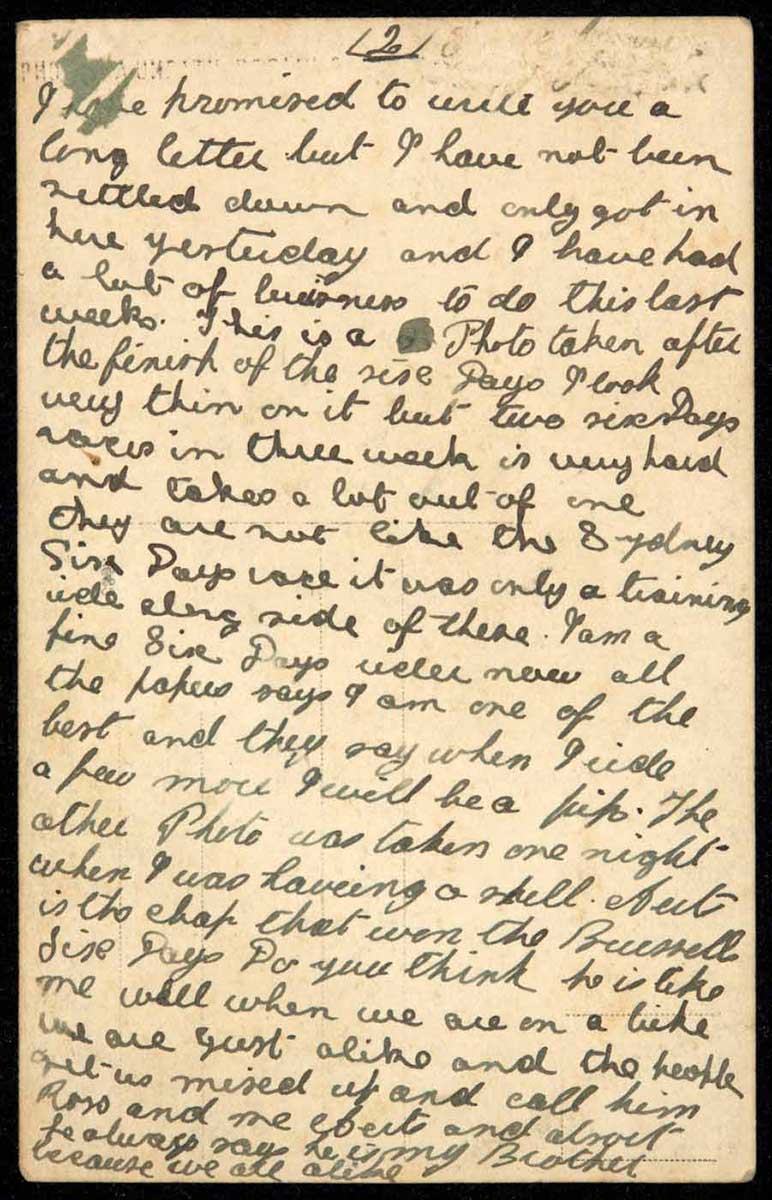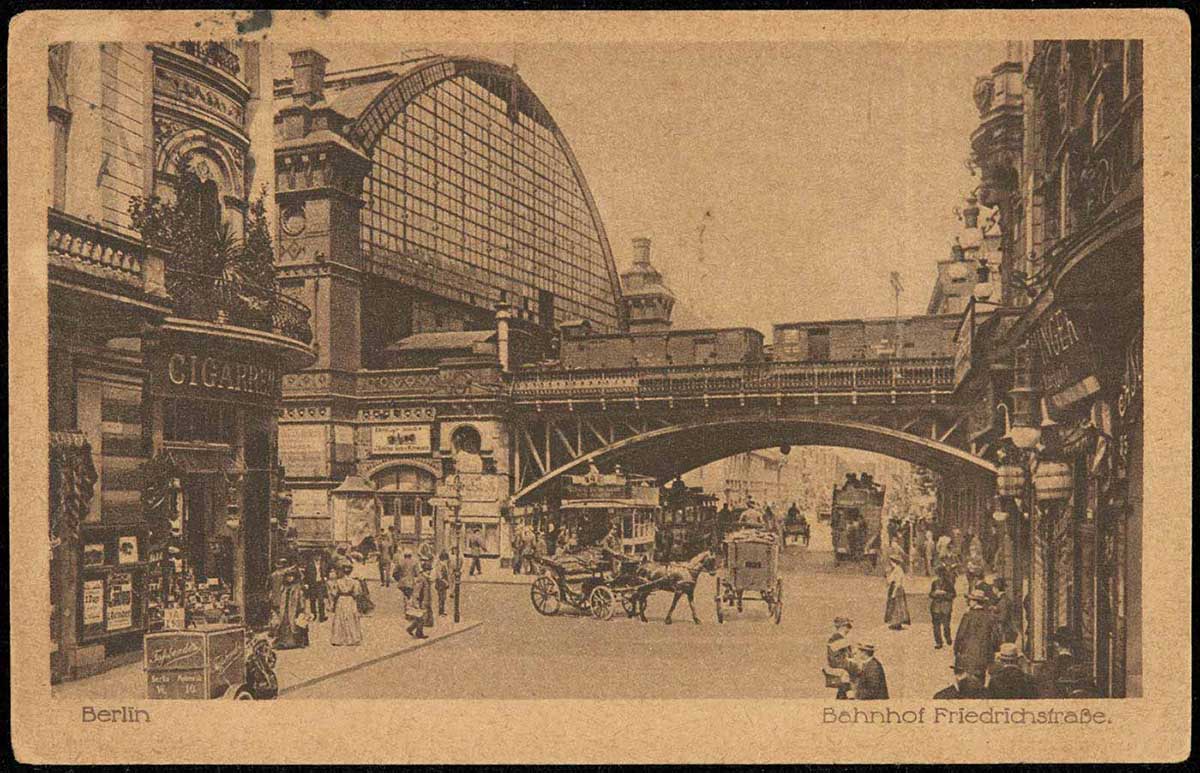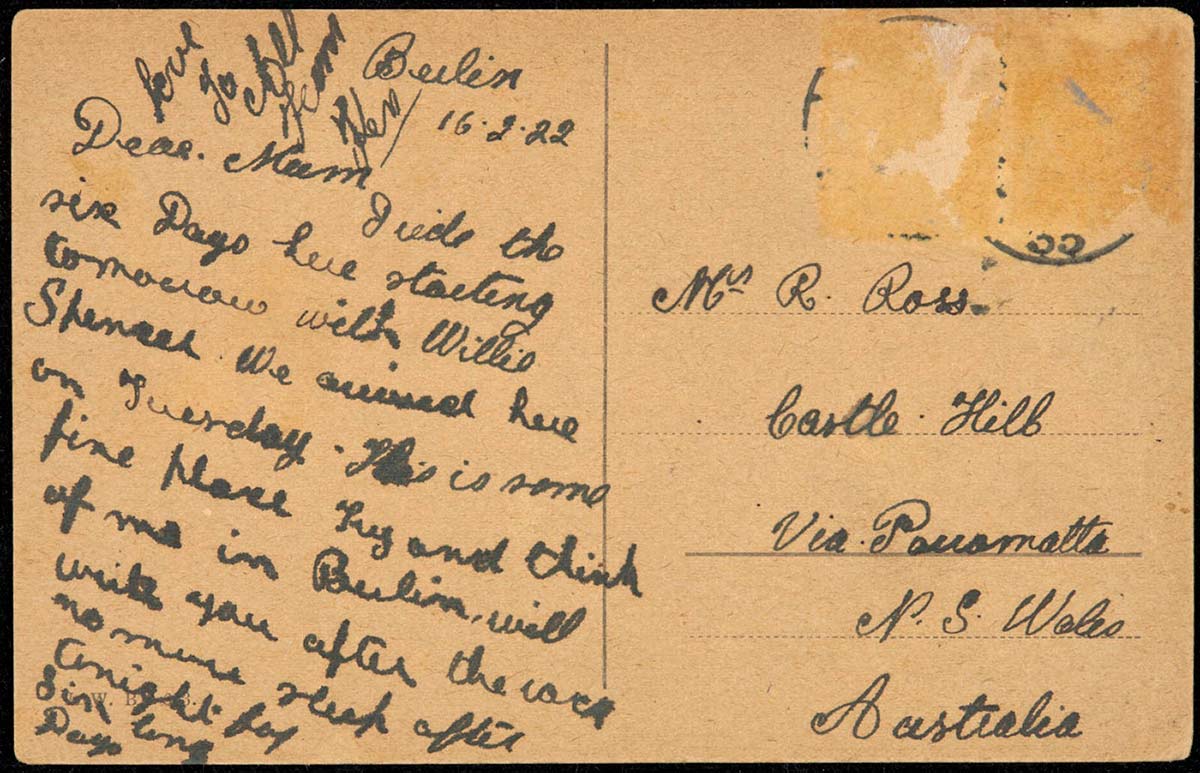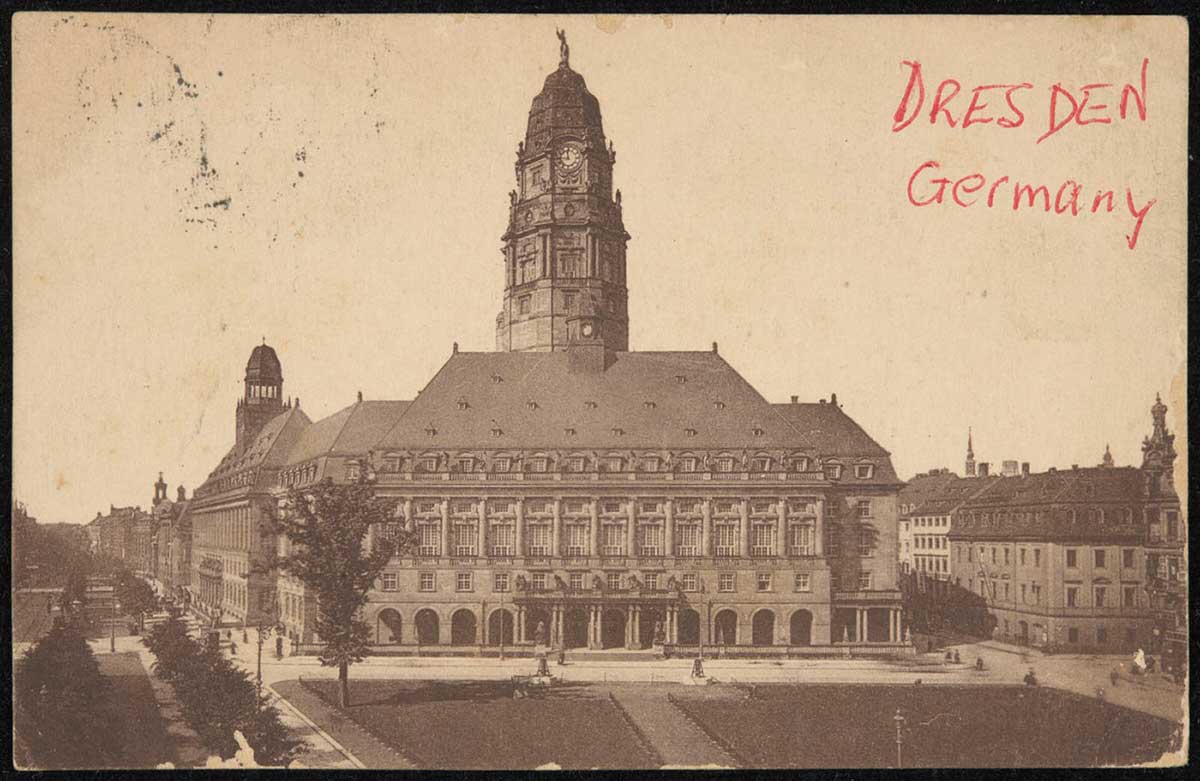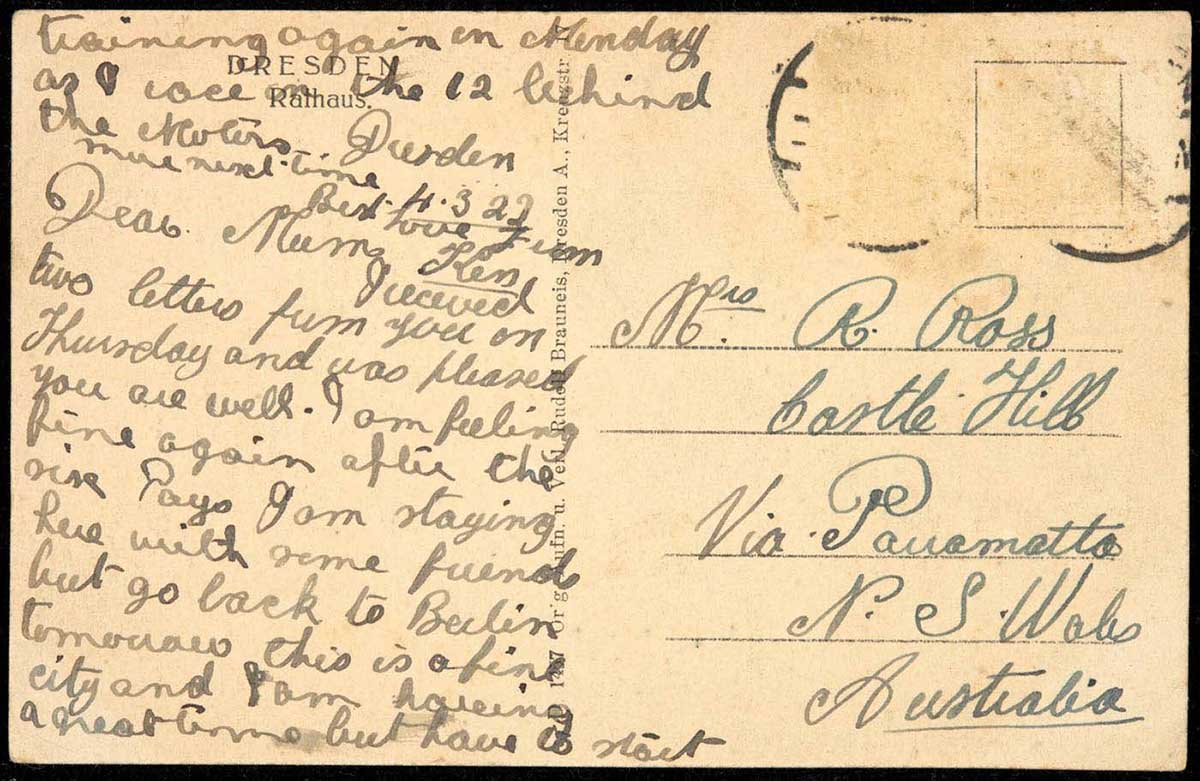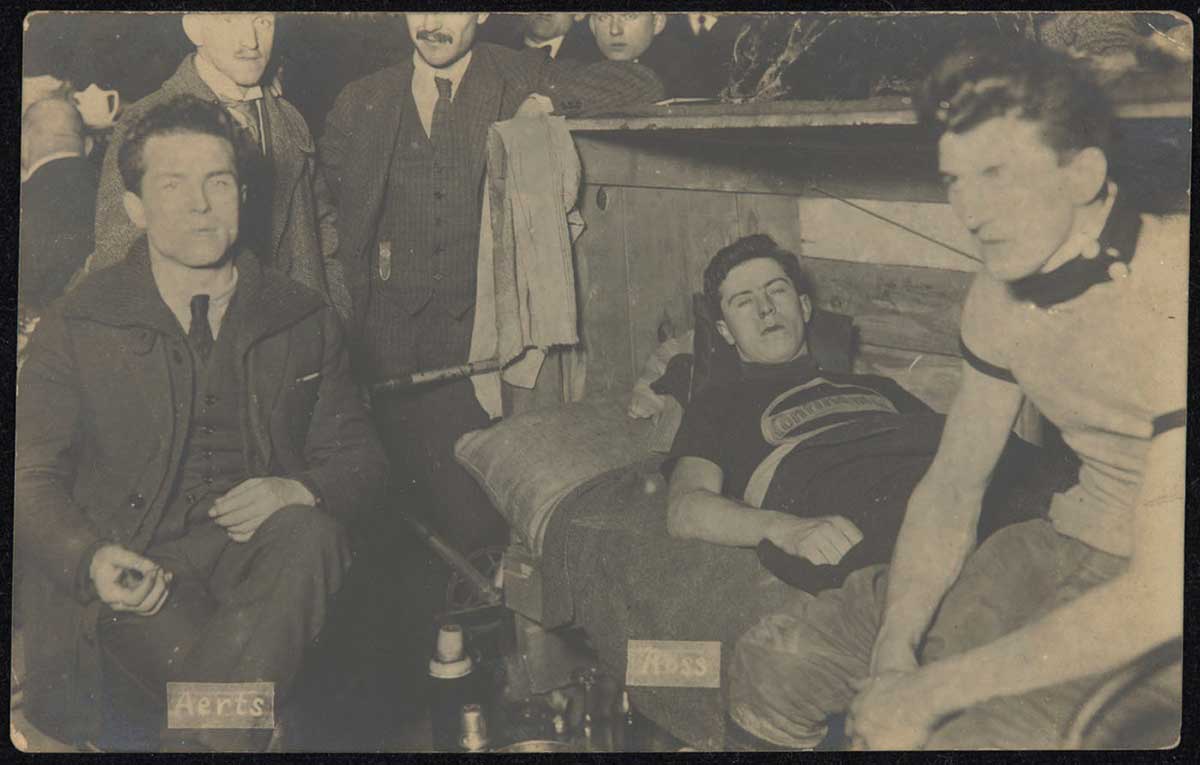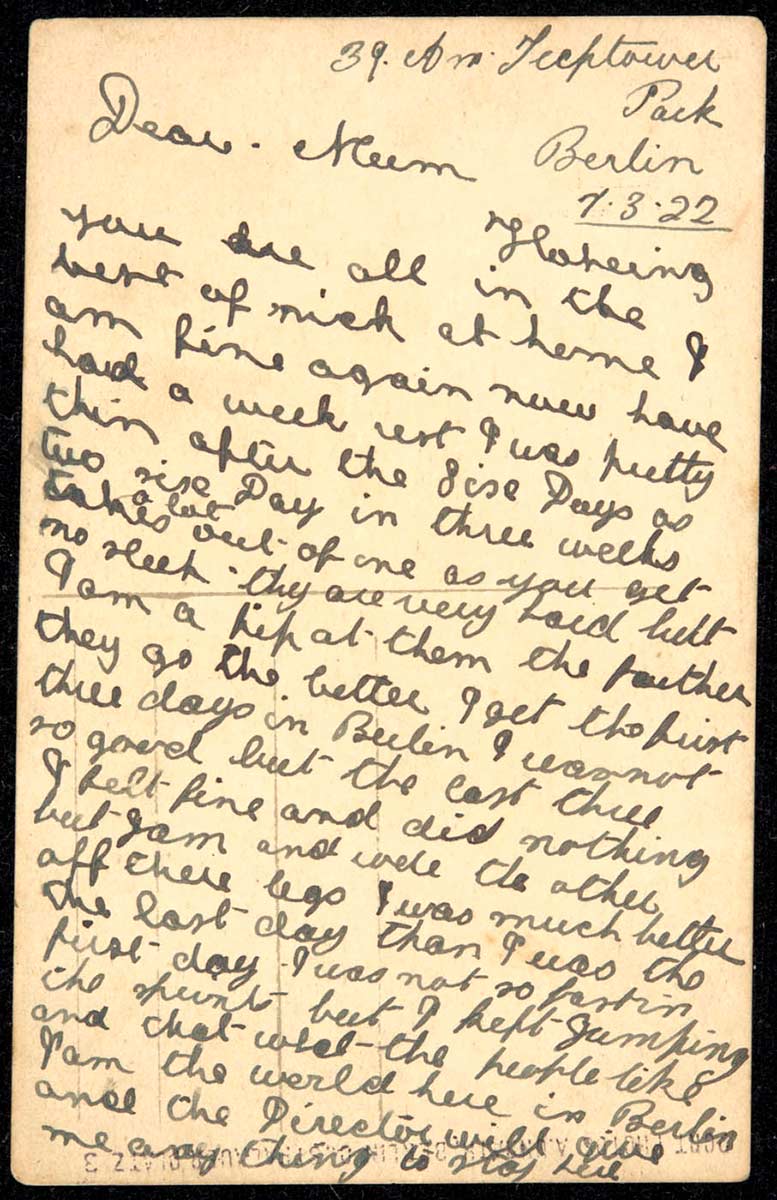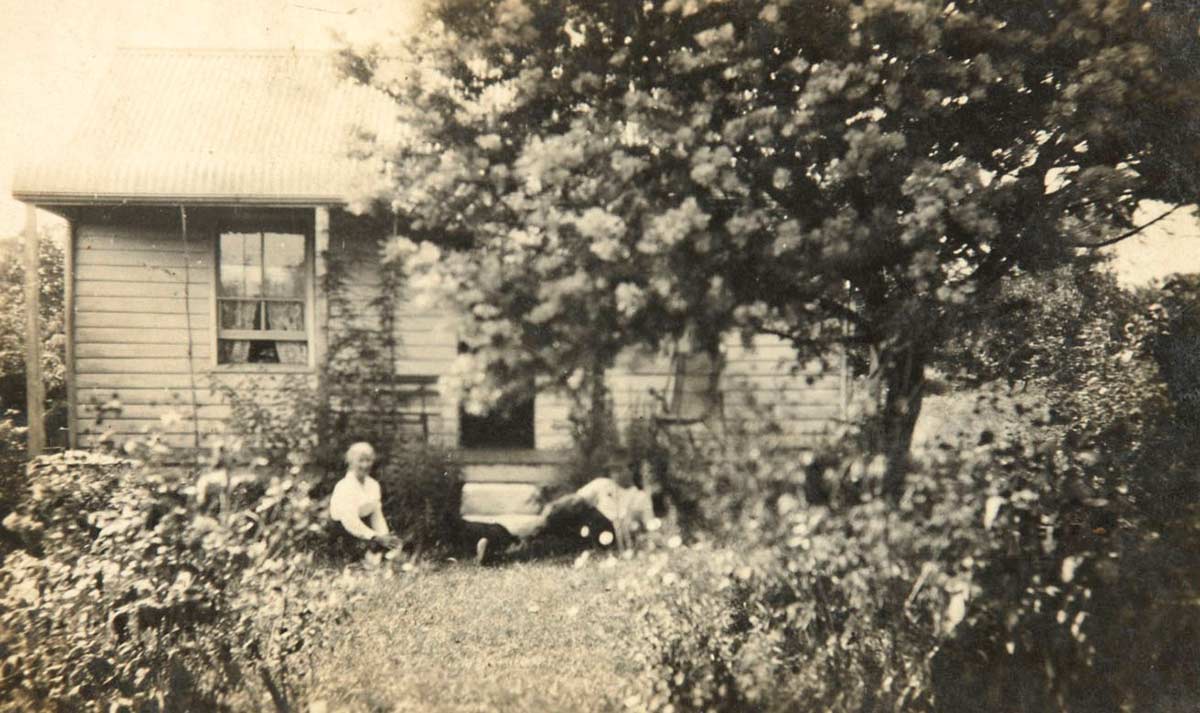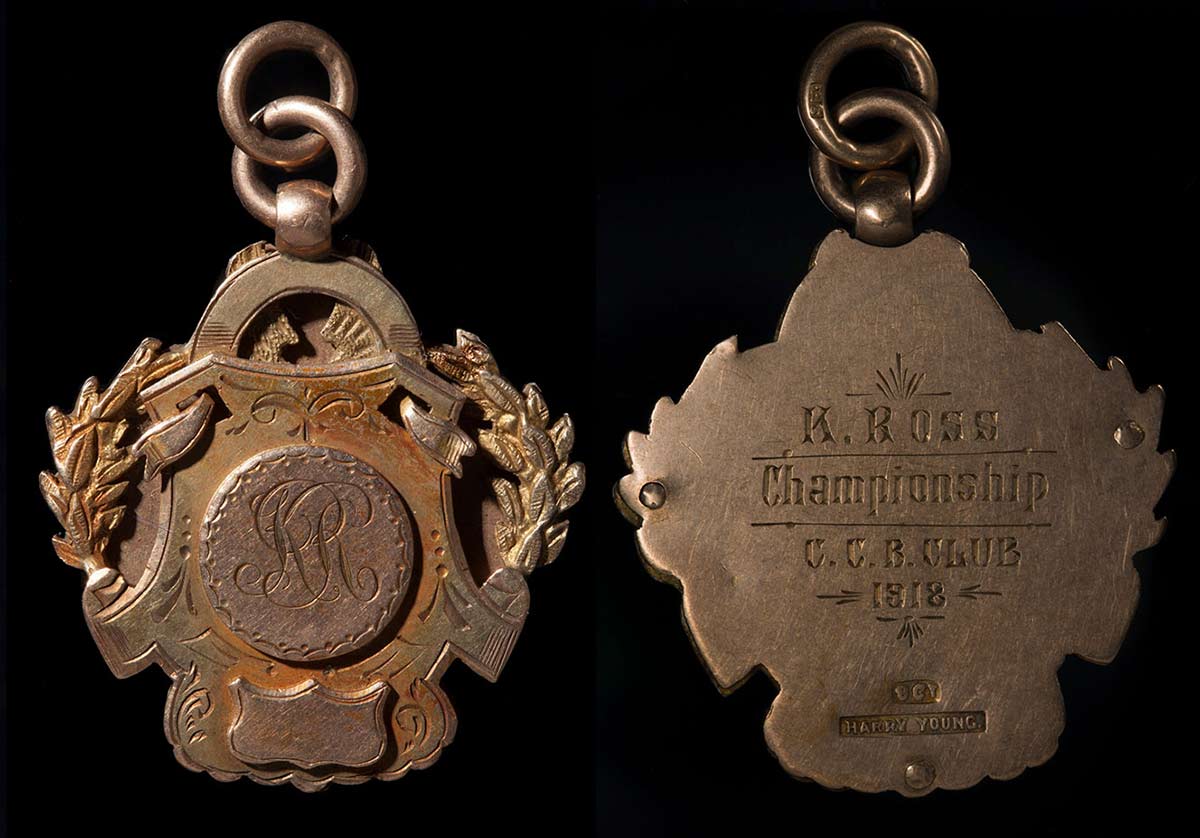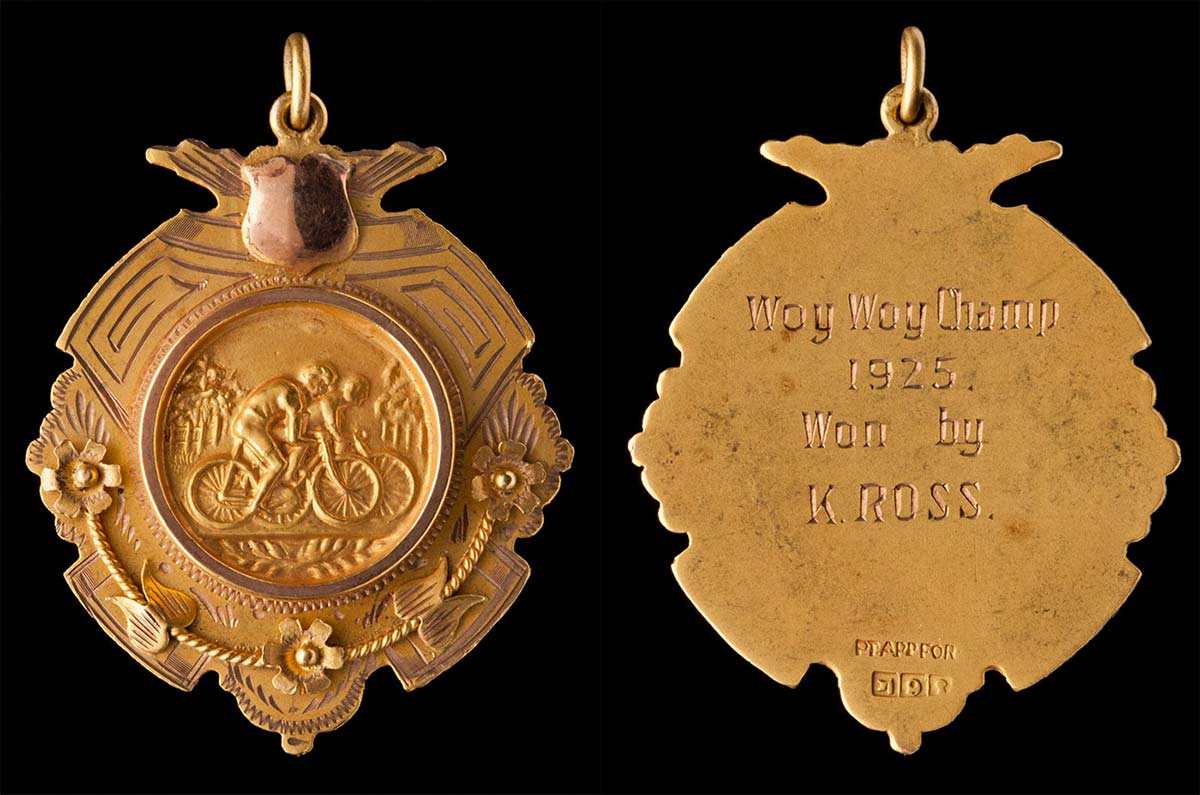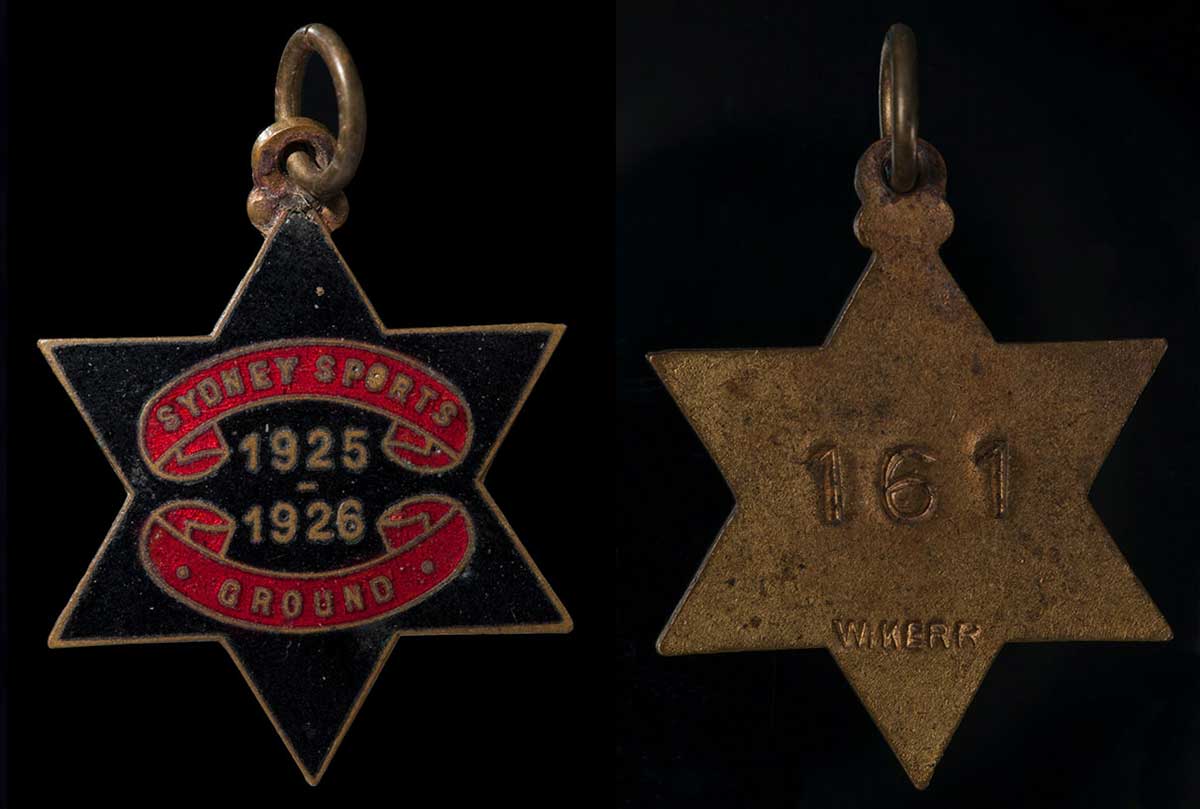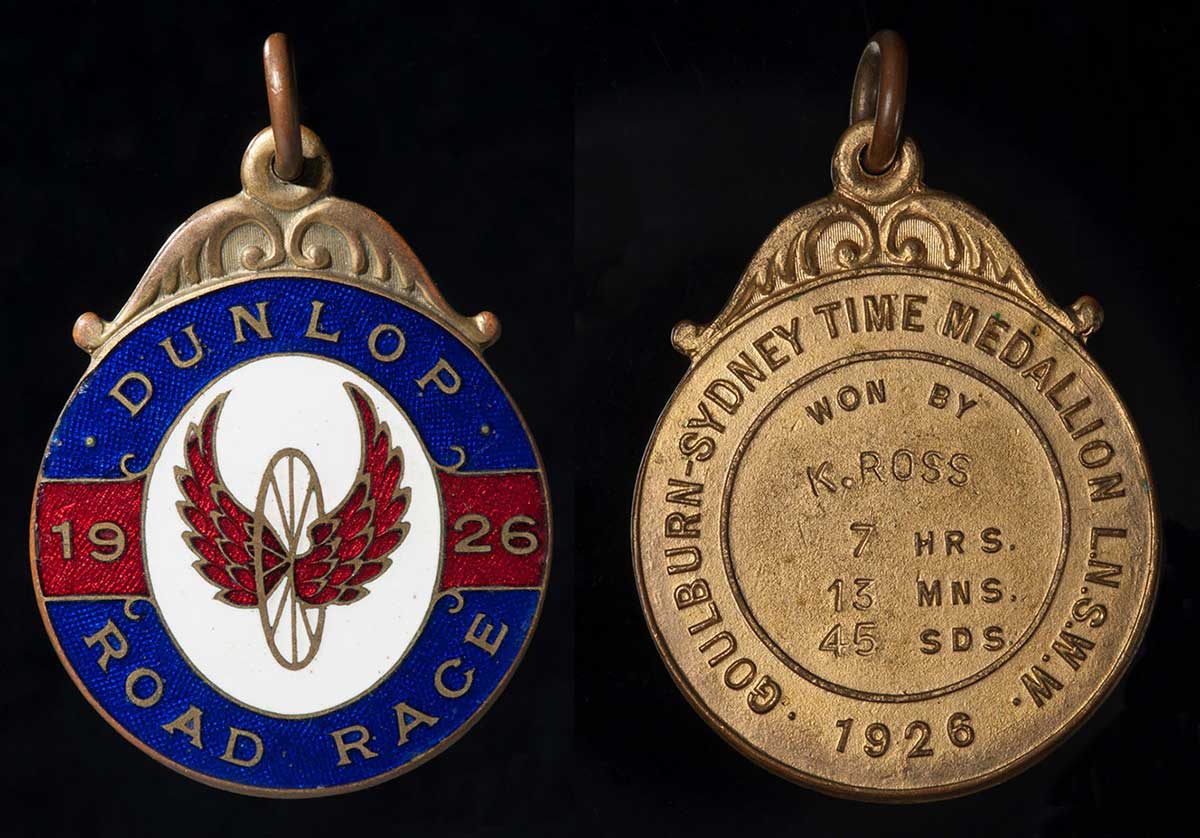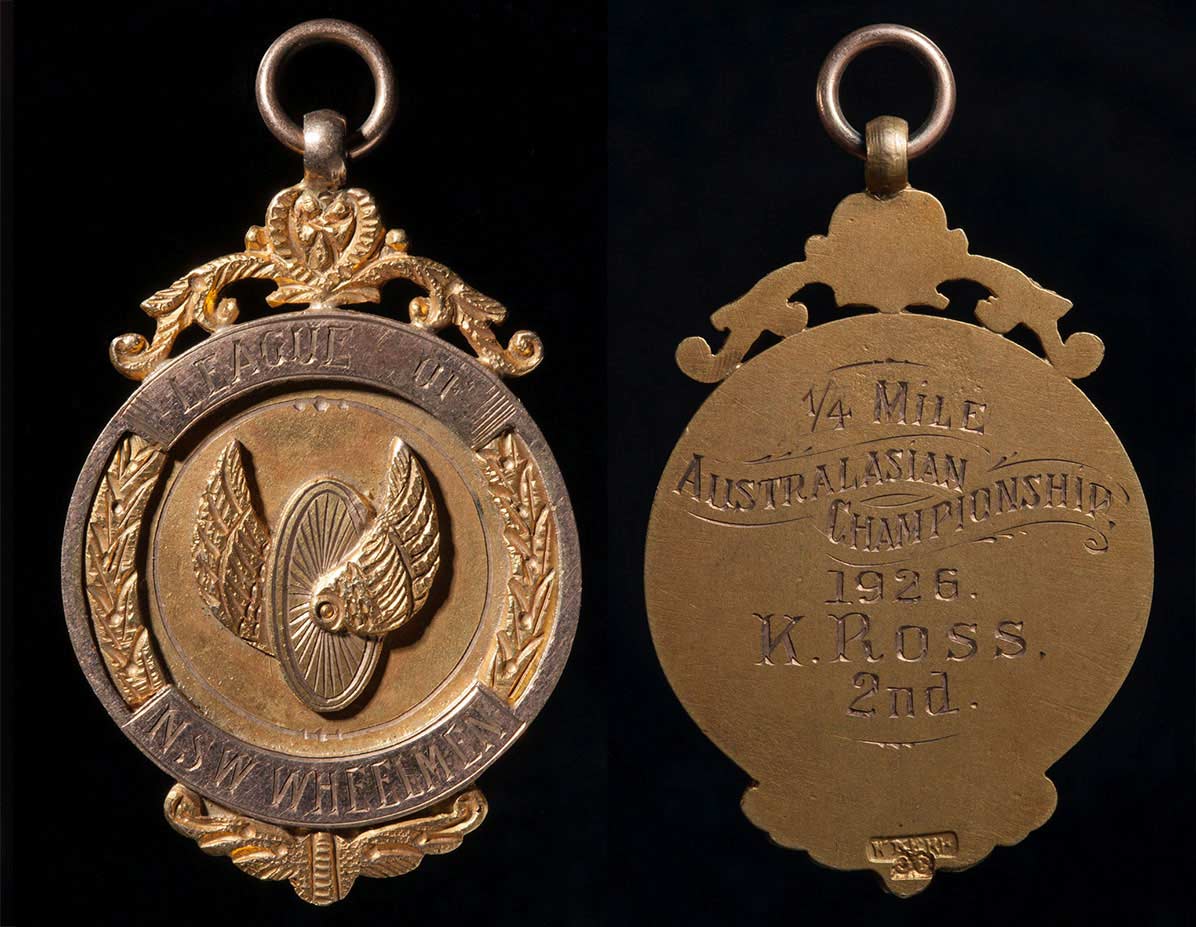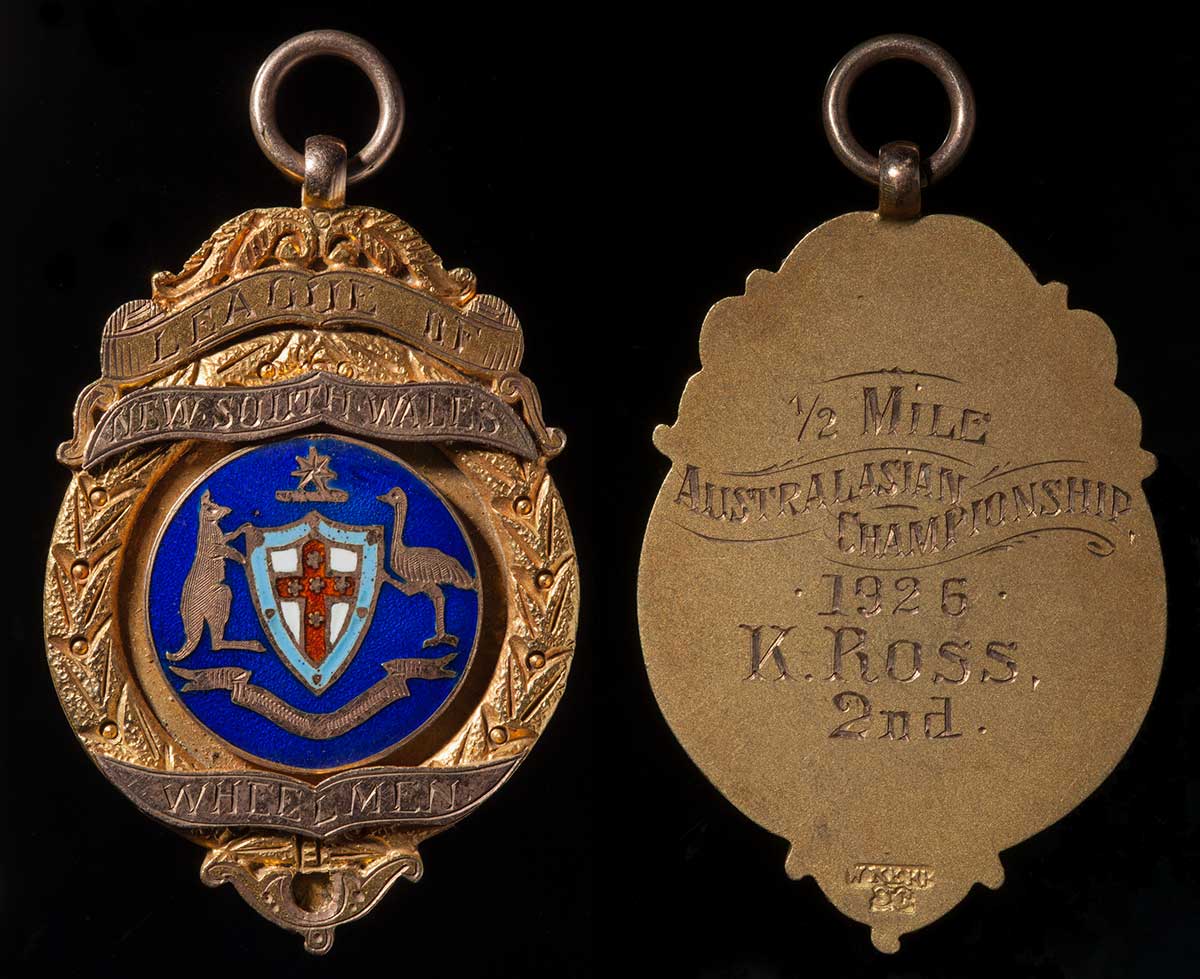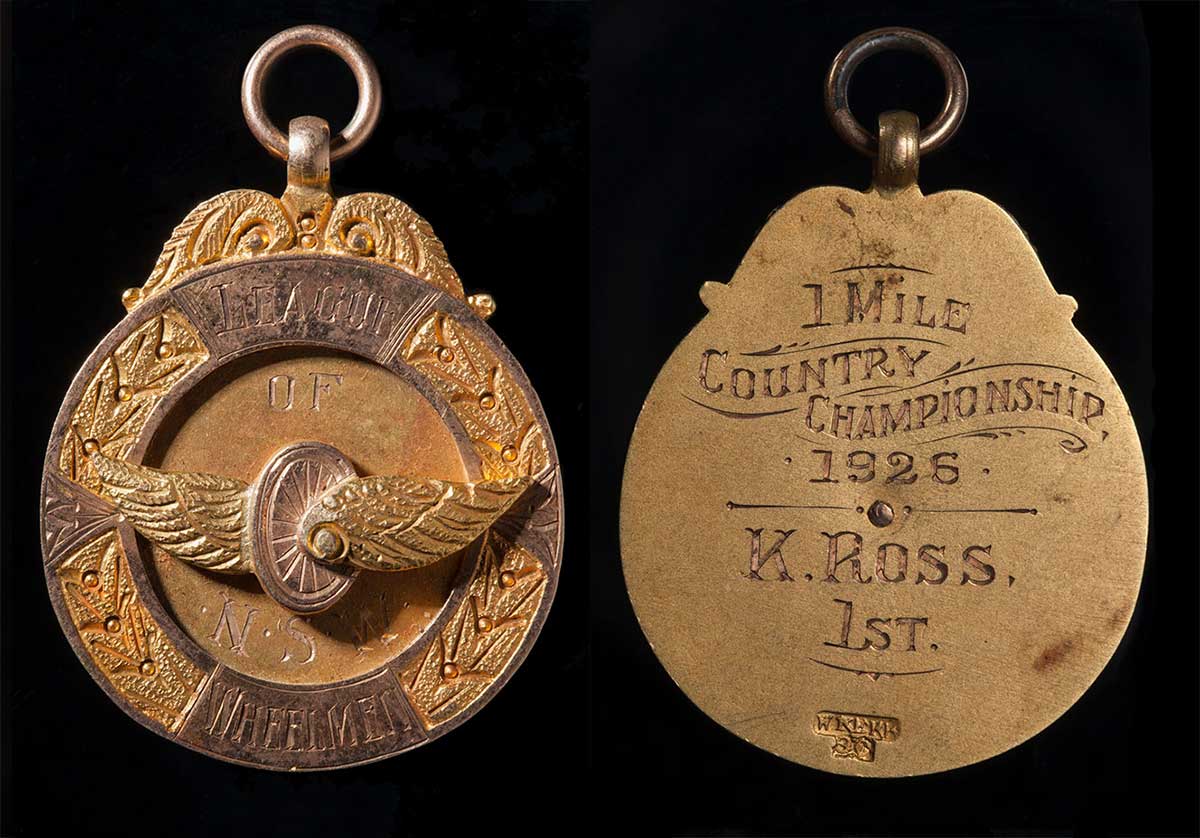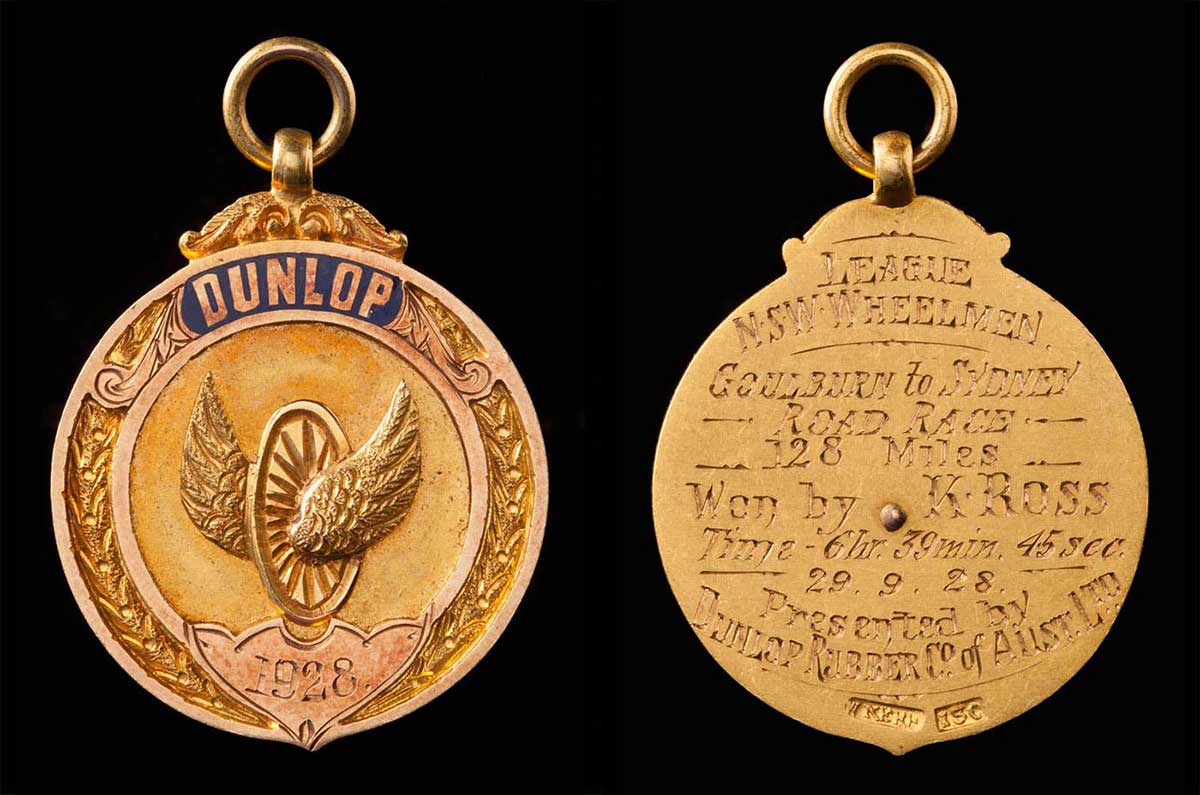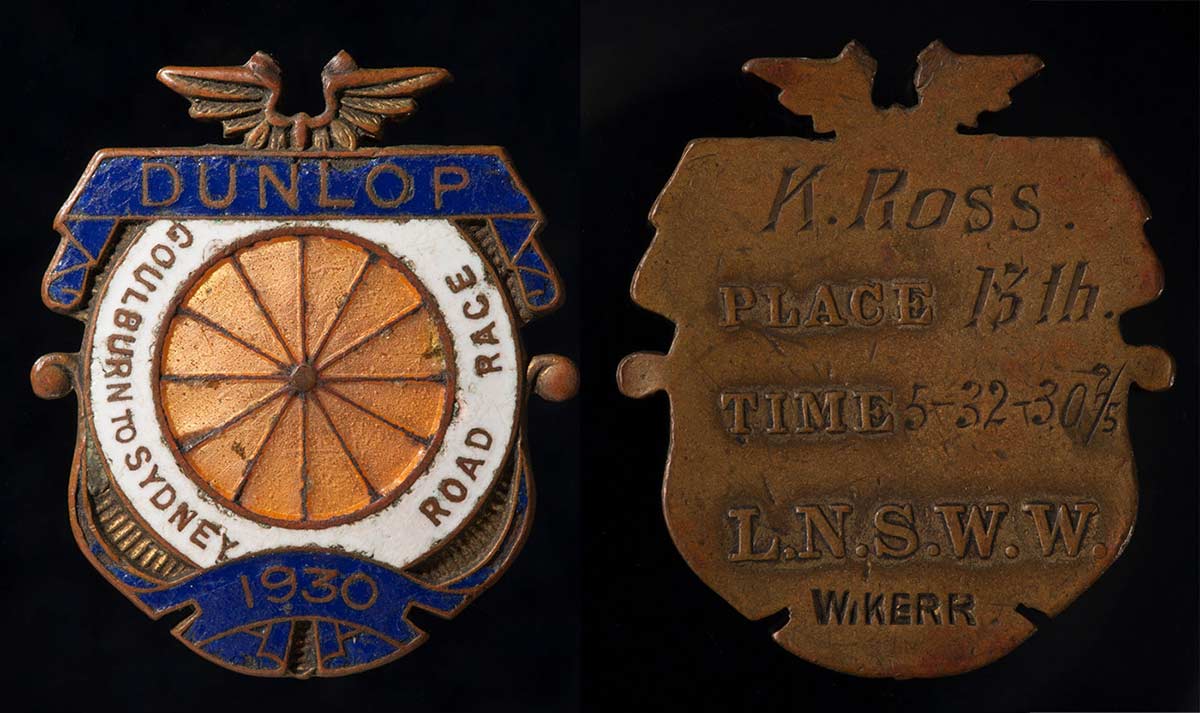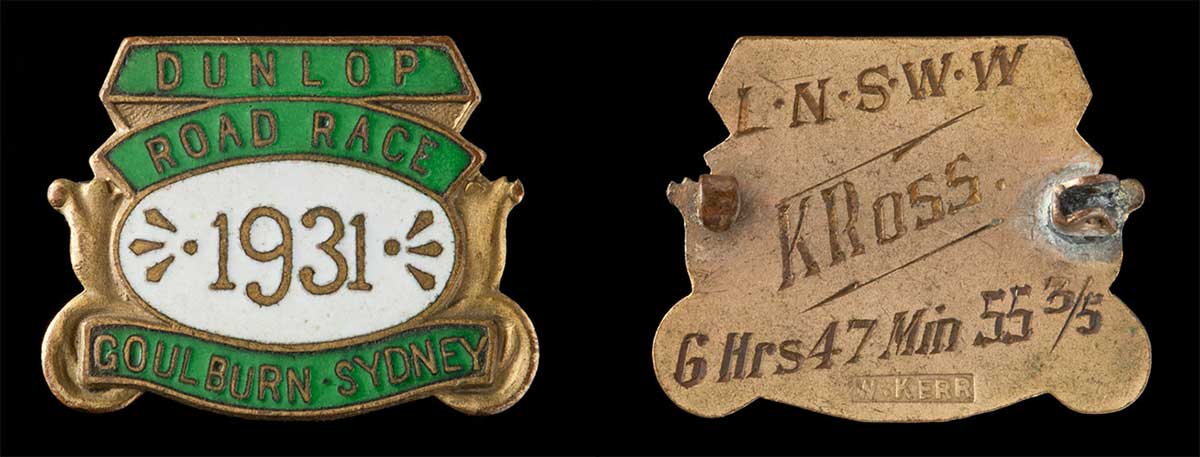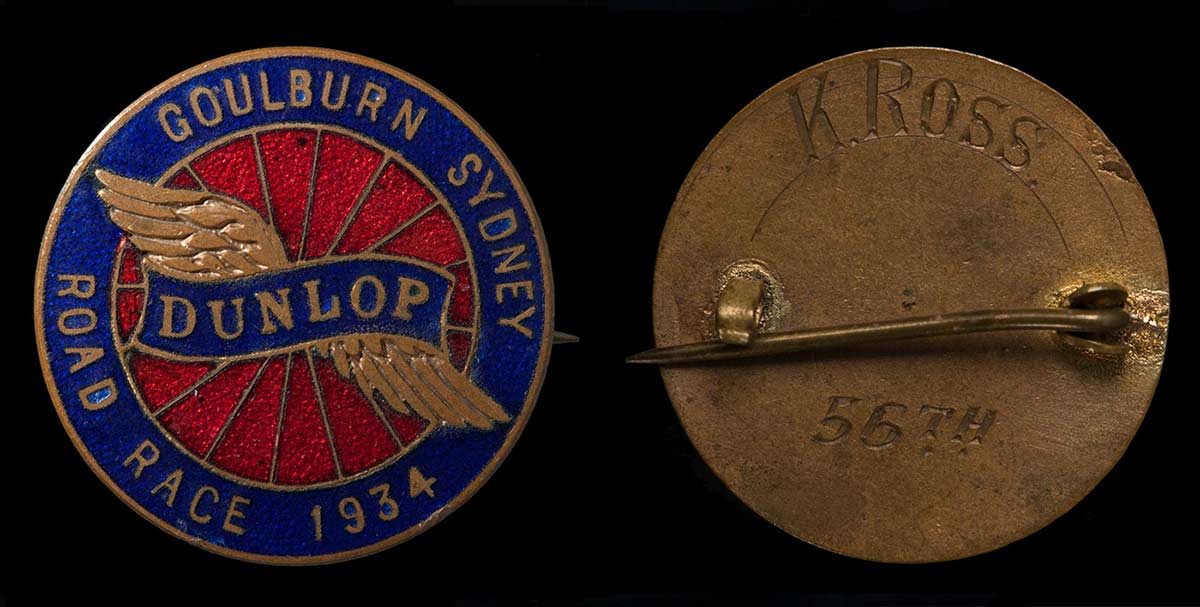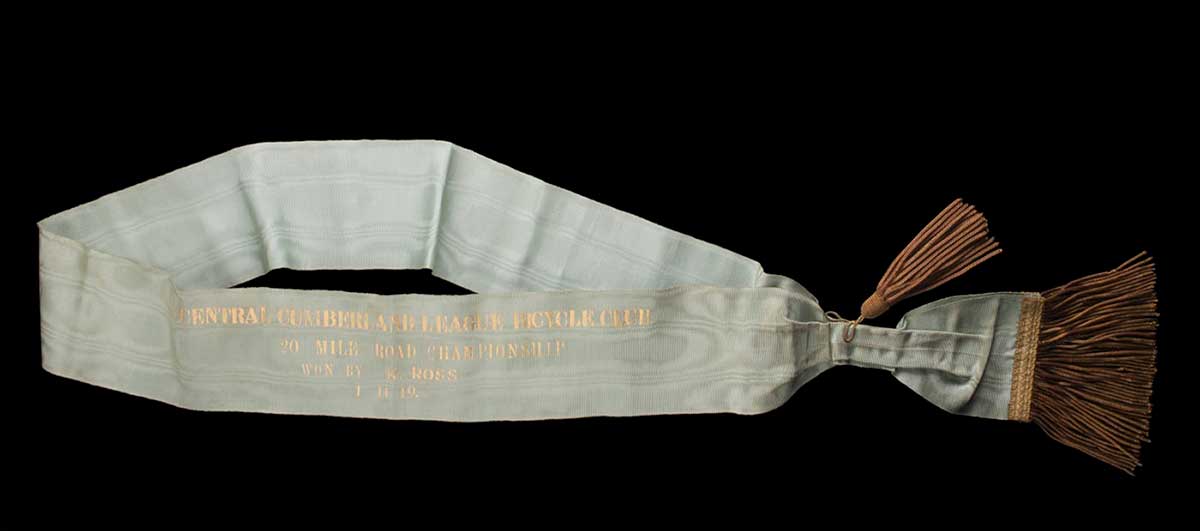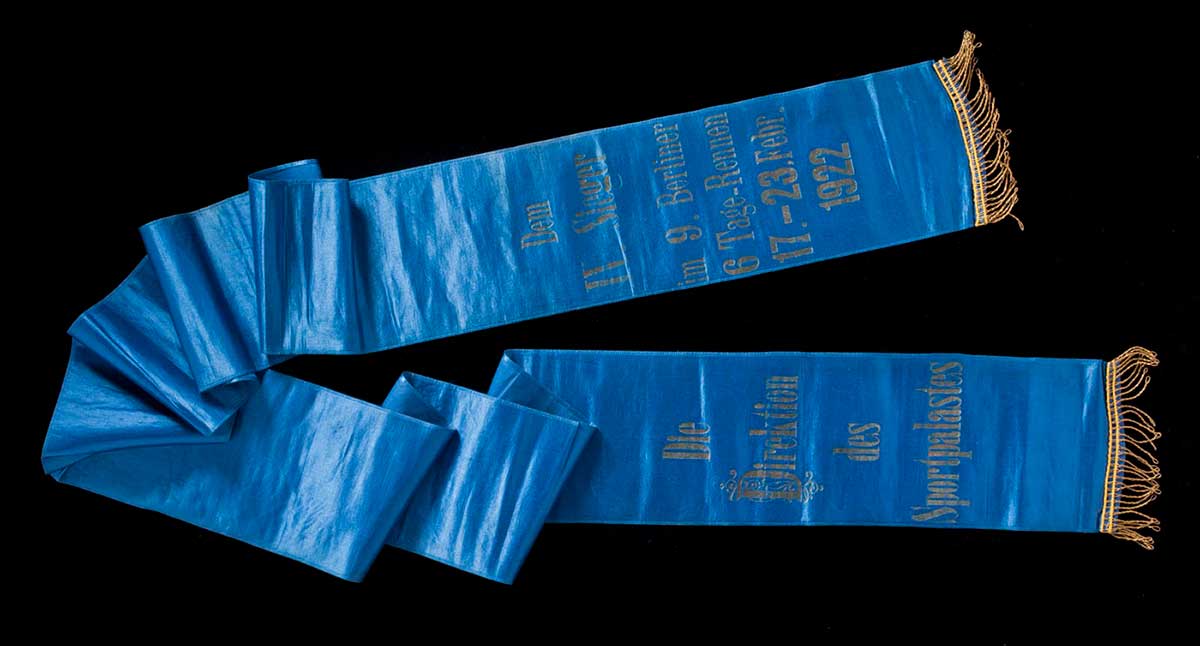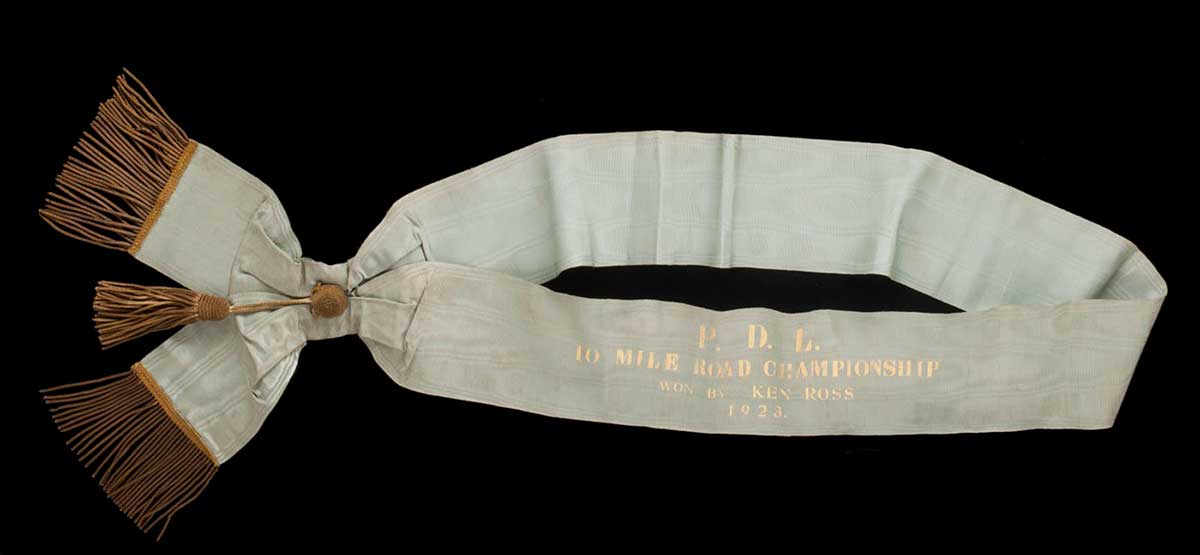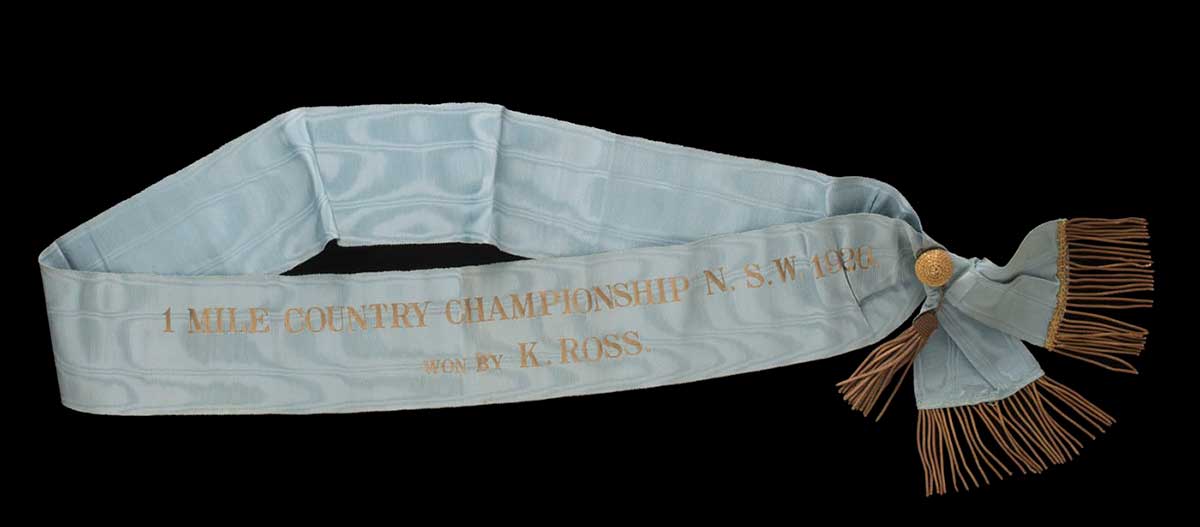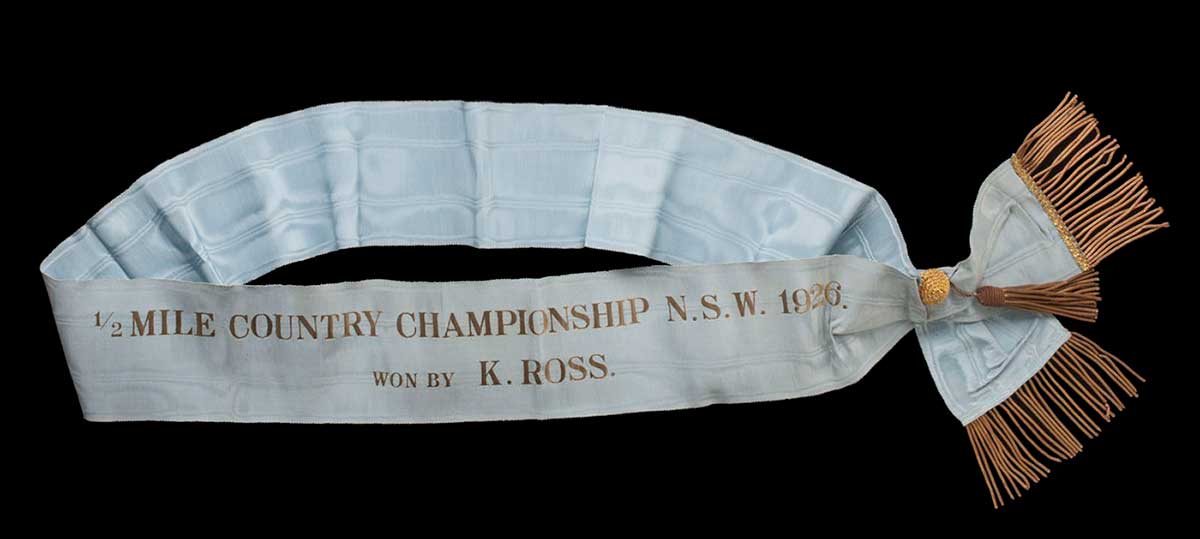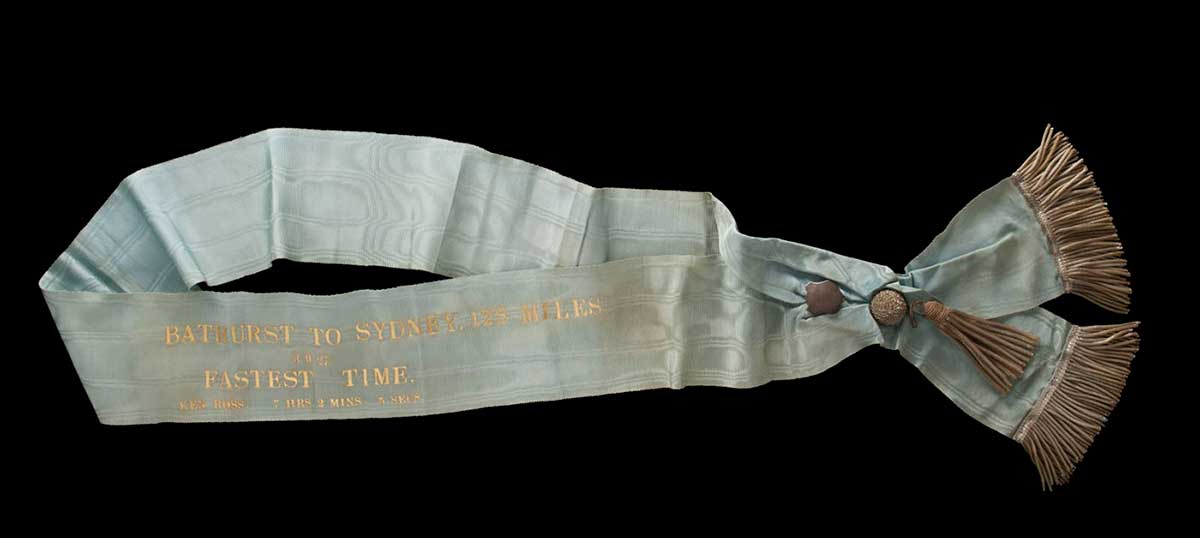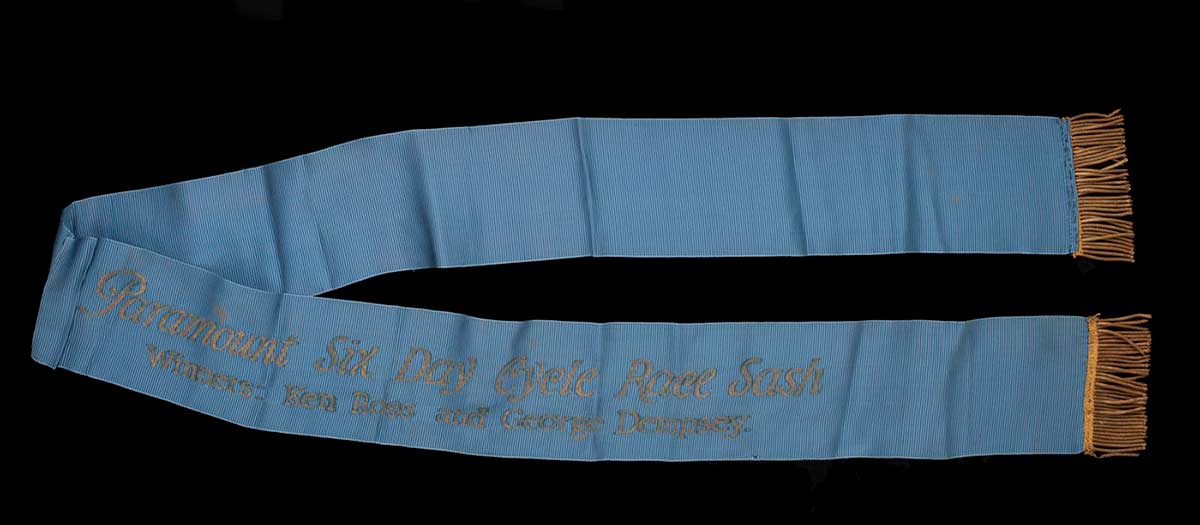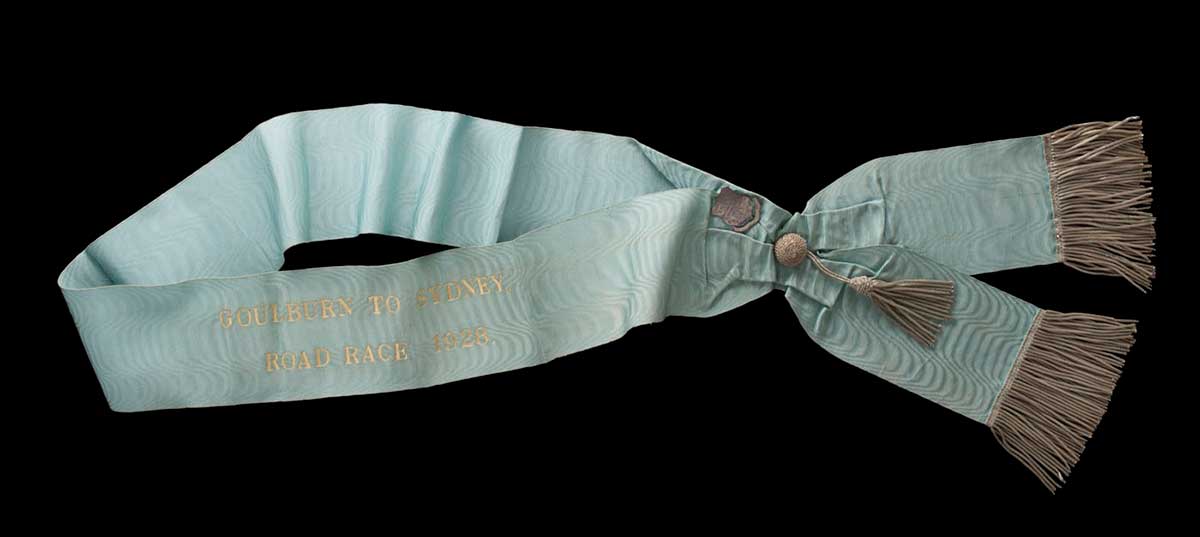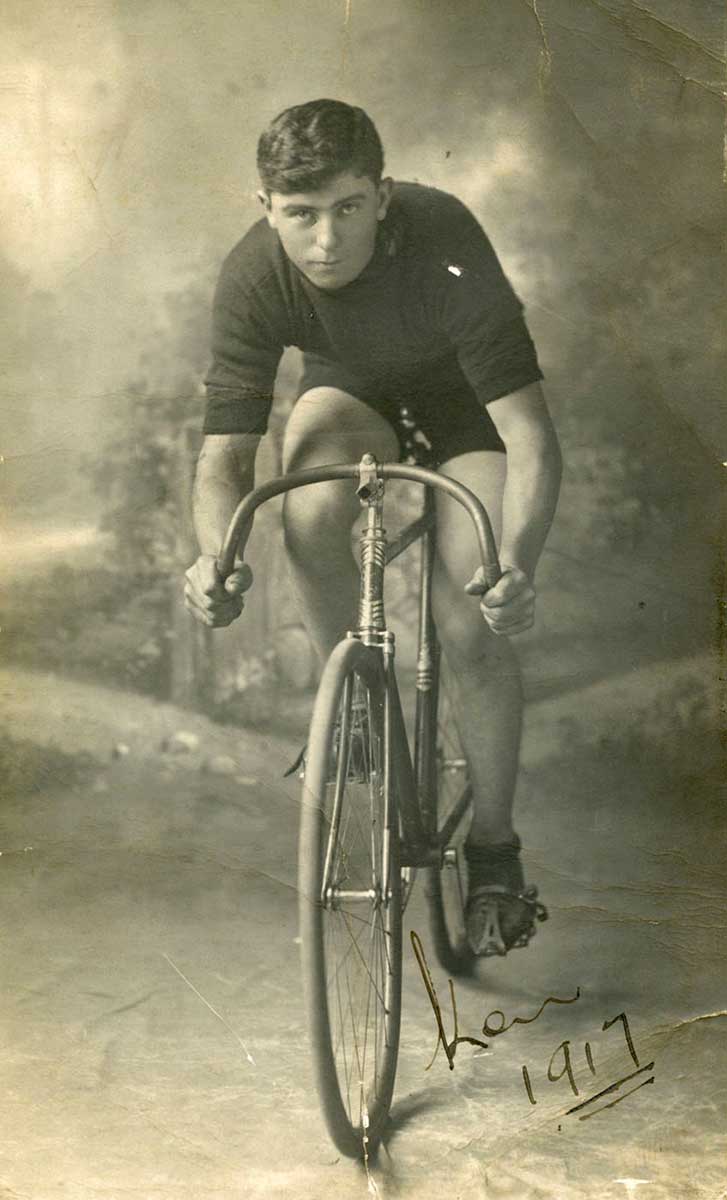
New South Wales racing cyclist Ken Ross had success in both road and track cycling in Australia and Europe.
Ross was among a select few Australian cyclists competing in Europe after the First World War, and he was among the first English-speaking sportsmen to enter Germany after the end of the conflict.
Early life
Ross was born on 11 August 1900 in Paterson, near Maitland in New South Wales. He was the youngest of six children – five boys and one girl.
Early in 1914 Ken’s family purchased an orchard at Castle Hill on the outskirts of Parramatta in north-western Sydney. At 13, Ken lost his father to cancer. Ken and his brothers spent long hours tending to the orchard until they enlisted in the First World War in 1915.
It was at Castle Hill, watching local boys on their bikes, that Ken’s interest in cycling was ignited.
Goulburn to Sydney cycling race
Ken was inspired to enter a novice race in 1917. He won and joined the Central Cumberland (League) Bicycle Club shortly after. That year he came 2nd in the Club’s 3 Miles (track) and 20 Miles (road) Championships, going on to win more club events in the following years.
In 1920 Ross entered the first Goulburn to Sydney race (a major event on the Australian racing calendar) staged after the First World War.
Having defeated the American track pursuit champion Alf Grender in an earlier race, Ross received a five-minute handicap for the 128-mile (206 km) race. Although he recorded the fastest time, he finished in second place, just outside the course record.
As well as continuing to compete in road racing, Ross had his first experience of six-day track racing in Sydney in 1919.
Berlin 23 February 1922
I [have?] promised to write you a long letter but I have not been settled down and only got in here yesterday and I have had a lot of business to do this last week. This is a Photo taken after the finish of the Six Days. I look very thin on it but two six days races in three week[s] is very hard and takes a lot out of me.
They are not like the Sydney Six Days race it was only a training ride along side of these. I am a fine Six Days rider now. All the papers says I am one of the best and they say when I ride a few more I will be a pip. The other Photo was taken one night when I was having a spell [refers to ‘Berlin 7.3.22’ below]. Aerts is the chap that won the Brussels Six Days. Do you think he is like me. Well when we are on a bike we are just alike and the people get us mixed up and call him Ross and me Aerts and almost he always says he is my brother because we are alike.
Six-day cycle racing
Six-day racing, involving a single cyclist completing as many laps as possible around a banked track for 16 hours a day over six days, began in England in 1878. The first six-day race in Australia was in 1881.
In early races, contestants used high-wheeled bicycles and competed as individuals. In later events, safety bicycles became standard.
This form of cycle racing was one of the most gruelling and physically demanding sports. It involved feats of endurance that often led to riders collapsing or becoming delirious.
Six-day competitions led to a barrage of criticism, as reflected in an editorial in the 11 December 1897 edition of the New York Times:
An athletic contest in which the participants 'go queer' in their heads, and strain their powers until their faces become hideous with the tortures that rack them, is not sport, it is brutality.
In 1899 New York City and Chicago passed laws forbidding cyclists from racing for more than 12 hours a day. This led to promoters pairing riders into two-man teams, with at least one rider required to be on the track at all times.
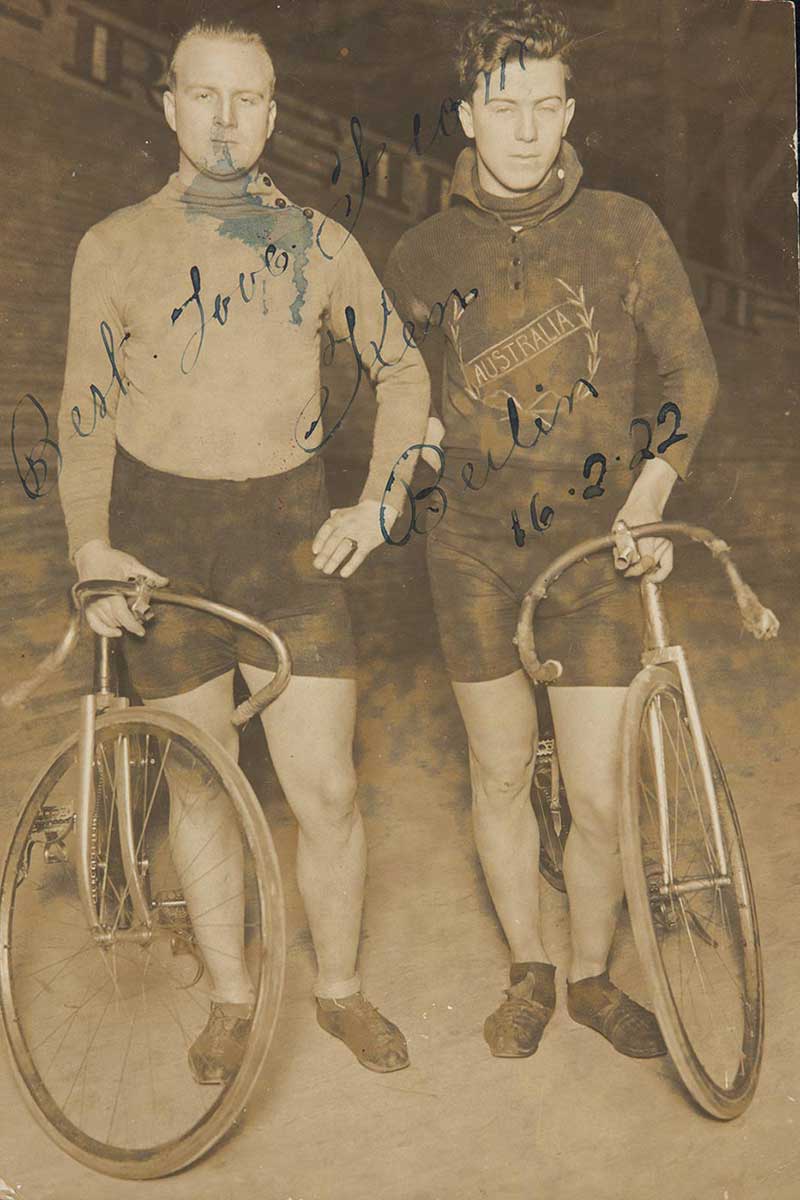
Cycling in Europe
Although he favoured road racing, Ross moved to Europe when he was 20 years old with the intention of competing at the world track championship.
At his first major European event, in Copenhagen, he was up against fellow Australian Bob Spears. As Australia’s first world sprint champion, Spears was lauded as the fastest cyclist in the world.
Although Ross did not make the final, he gained valuable experience.
Ross competed in his first European six-day race in Brussels in January 1922, partnered with Bobby Walthour Snr. Together they managed ninth place.
This event prepared him for the prestigious Berlin six-day race the following month, where he teamed with American sprint champion Willie Spencer.
During the race, Spencer was only able to stay at the pace for three days, which left Ross desperately looking for a replacement. Fortunately, a rider from another broken team became available.
German rider Adolf Huschke joined Ross and, despite being penalised a lap for the team change, they fought their way back to fourth place.
Ross developed a reputation as a determined and smart rider. A newspaper report in the Referee claimed that:
Ken Ross is without a doubt the most popular rider over here. He has put up some remarkably fine rides, although dogged with bad luck, and has displayed a stack of courage and endurance which has endeared him to the public.
Despite a hectic schedule, Ross was determined to have a match race with world pursuit champion Oscar Egg while he was in Europe. They finally met, alongside Charles Deyruter, in a Grand Omnium pursuit. Egg took the title, defeating Deyruter and Ross.
Berlin Six Day Race postcards and photos
While he was competing in Europe, Ross regularly sent postcards and photographs to his mother.
Berlin 16 February 1922
Dear Mum
I ride the six Days here starting tomorrow with Willie Spencer. We arrived here on Thursday. This is some fine place. Try and think of me in Berlin, will write you after the race. No more sleep after tonight for six long Days.
Love To All From Ken
Dresden 4 March 1922
Dear Mum
I received/two letters from you on Thursday and was pleased you are well. I am feeling fine again after the Six Days. I am staying here with some friends but go back to Berlin tomorrow. This is a fine city and I am having a great time but have to start training again on Monday as I race on the 12 behind the Motors.
More next time.
Best Love From Ken
Berlin 7 March 1922
39 Am Treptower Park, Berlin
Dear Mum
Hoping you are all in the best of nick at home. I am fine again now have had a week rest. I was pretty thin after the Six Days as two Six Day [races] in three weeks takes a lot out of one as you get no sleep. They are very hard but I am a pip [the best] at them. The further they go the better I get. The first three days in Berlin I was not so good but the last three I felt fine and did nothing but jam and ride the other[s] off their legs. I was much better the last day than I was the first day. I was not so fast in the sprints but I kept jumping and that’s what the people like. I am the world here in Berlin and the Director will give me anything to stay here.
Missing Australia
Ross obviously missed his family and home in Australia while he was abroad. In a postcard to his mother from Paris dated 28 December 1921, Ross wrote:
I suppose you are getting over Christmas. Mine was very quiet, the worst Christmas I’ve ever had, but never mind we will make up for it when I get back to dear old Castle Hill. There is no place like home take it from me.
Ross’s mother Rose was a central figure in his life and his regular postcards home from Europe reveal the close bond between them and the deep affection and respect he had for her.
From Paris on 18 August 1921, shortly after his 21st birthday, Ross wrote to his mother saying:
I wrote you last night but I got a letter from you this afternoon so thought I would let you know I also forgot to tell you that I received that cable from you … I got it at 4 o’clock on 10th August. I was more pleased than if I had won a lottery. I cannot thank you enough by letter for sending it, but will not forget when I get back home. It put new life into me to think there was someone thinking of me.
Return to Australia
After 18 months in Europe and having had success in all forms of road and track racing, including motor-paced events, Ross returned to Australia where he spent the best part of 1923 riding with the Coburg Cycle Club. In 1924 Ross married Elsie Mildred McKenzie and moved to a citrus orchard near Gosford, New South Wales. He continued to compete in road and track events, at the same time as running his orchard.
Ross won three Sydney six-day races in the 1920s – 1922 with Les Hammond, 1926 with George Dempsey, and 1927 with Jack Fitzgerald.
Ross recorded the fastest time in the 1926 Goulburn to Sydney road race, as well as gaining second place. Also in 1926, he partnered George Dempsey to win the 1926 Sydney Six Days Race, won an important teams race with L Smith, and claimed the huge prize of 100 pounds for the Melbourne handicap.
During the 1927 season Ross established a new record of 7 hours 2 minutes 5 seconds for the 128-mile (206 km) Bathurst to Sydney race. He also added another six-day race to his tally, this time partnering with the famous sprinter Jack Fitzgerald.
The 1928 Goulburn to Sydney race appeared to attract far more interest than usual because it was the first time RW ‘Fatty’ Lamb was to ride as a professional after having won the amateur event two years in a row. Ross won the race with Lamb coming second.
Ross not only achieved the fastest time on three occasions in this prestigious race, but had a first and two seconds to his credit.
At a time when Victorian riders often dominated competitive cycling, Ross was one of only three New South Wales riders to achieve fastest times in the Goulburn to Sydney race throughout the 1920s and 1930s.
Overall, he competed seven times. He achieved the fastest time on three occasions (1920, 1926, 1928), first place and fastest in 1928, second place on two occasions (1920, 1926), third fastest in 1930 and fourth fastest in 1931.
Late career
After nearly 10 years of racing, Ross decided to devote more time to his family and his orchard business in Avoca, north of Sydney. However, he did continue to race. He contested the 1930 Goulburn to Sydney race, but a new generation of young riders was in the ascendancy and the fastest time was set by Hubert ‘Oppy’ Opperman.
Strangely enough, this was the first and only Goulburn to Sydney race where these two prominent riders met. Ross competed again the following year and recorded the fourth fastest time.
In 1934 Ross was selected to captain the New South Wales team for the Victorian Centenary 1000. In preparation for the event Ross planned to ride from his Avoca home to Melbourne. At Gundagai, Ross was hurt in a collision with a car.
A settlement was made with the driver and Ross was paid expenses and was able to claim the £5 appearance money he had lost by not being able to compete in the event.
After cycling
Ross retired from competition shortly after the Gundagai accident, although he would intermittently compete in events. His last first-class appearance was in 1937.
He continued to train other cyclists, with some success. The 1932 Goulburn to Sydney race was particularly successful for him and his ‘young guns’ who claimed three of the top four placings.
Ross was also a member of the Avoca Beach Life Saving Club and served as Vice-President. He was given much of the credit for training Trevor Gallard, who won the Australian surf ski championship in 1951.
Ken Ross died at Gosford in March 1974.
In our collection
